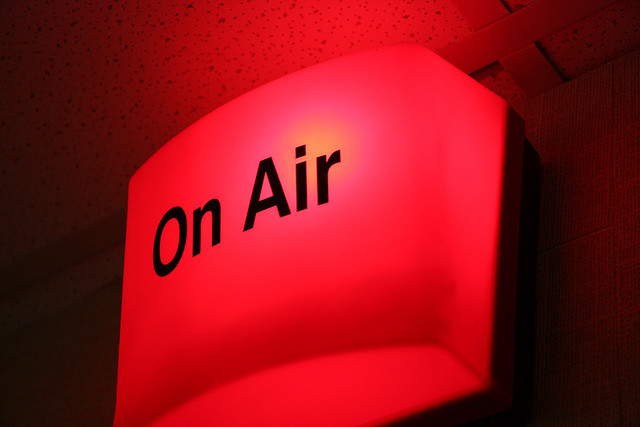On air in 3, 2, 1... Airtime's new live radio modes and how to use them

This is the fifth in a series of Airtime blog posts from the archives. Last time, we demonstrated How Silan and ReplayGain made Airtime broadcasts sound better. Before that we showed you How to get the most out of Airtime smart blocks.
There are four ways to broadcast live in Airtime, here's your handy guide on how to get the most out of all of them.
Using source streams
Airtime DJs can rebroadcast incoming streams managed by a source switcher which manually, or automatically, connects to the correct source (and fades between them).
On the lower left side of the Stream Settings page (you’ll get there by clicking on the System-->Streams) you can configure remote live input streams from DJ programs such as Mixxx or IDJC or smartphone applications used by broadcast journalists. Airtime supports two types of live input stream; the Show Source, which enables a specific person to stream in during their own show, and the Master Source, which can override the Show Source if necessary. If neither type of live input is available, Airtime will fall back to Scheduled Play (playlists, smart blocks, remote streams and files scheduled in Airtime, in advance of or during a show). You can turn on and turn off the sources by clicking on the little square right next to them. You’ll find the field in the top right corner of the screen.
Auto Switch On
The Auto Switch Off and Auto Switch On checkboxes enable playout to be switched automatically to the highest priority source whenever an authenticated input source disconnects from or connects to Airtime, respectively. Use the field Switch Transition Fade to set the length of the audio fade as scheduled playout is switched to a remote input source, and back. You’ll locate them by clicking again to System-->Streams.
In the Master Panel, available input source streams are shown with an orange line connecting the source to the switch. You could think of it like a patch cable connecting a source to a broadcast mixer. When that switch is active, another orange line connects the switch to the On Air indicator, like a patch cable connecting a mixer to a transmitter.
If you have checked the Auto Switch On box in the Stream Settings page, the Master Source switch will move automatically to the active position, on the left, when an authenticated master source connects to Airtime. Otherwise, you can activate the switches manually by clicking the left side of each switch, or deactivate them by clicking the right side. Simple!
Schedule a webstream
A web stream URL and metadata can be added to the Airtime library, so that a remote stream can be searched for and scheduled to be pulled into a show. For example, at the top of the hour your station may pull a news report from journalists working in another studio. This is a different concept from Master Source and Show Source remote streams which are pushed into the Airtime playout schedule.
To add a web stream, hit the Open media builder button, then New button and finally select New Webstream from the pop-up menu. Like a playlist, web streams in the Library can have a title and description, which may help you find them in searches later.
The Stream URL setting must include the port number (such as 8000) and mount point (such as remote_stream) of the remote stream, in addition to the streaming server name. A Default Length can also be set, although if the stream is added at the end of an overbooked show, it will be faded out when the show ends.
Live record a show in the studio
Live show recording from the input of the server's sound card, if one is fitted, can be enabled in the Add Show box of Airtime's Calendar. During a recording, a red light is shown in the Master Panel, and the word Recording appears in a red font to the left of the show name. After the recording has finished, you can find the recorded file in the Library, by searching for recorder. The file will be labelled with a Title containing a date and time stamp, as well as the name of the show. It can also be set to rebroadcast at a later date when you initially schedule the show.
What about full live assist?
We're almost there. Head to the Now Playing page and expand the Advanced Search Options, which brings you to Library search, where you can search either based on title, creator, album, length and date when the track was uploaded.
After you have found the items that you want, you can then drag and drop them from the library table on the left side of the page into the “Shows” on the right side, including the current playing show.
If the current show has nothing playing out at the time, the new item will begin playing immediately. This manual triggering of playout can be used as a live assist technique, in which the Airtime server's soundcard output is mixed with other sources such as microphones or telephone hybrids on its way to a transmitter, or a separate stream encoder. You would use it for example during a live show, when you don’t want to cut off a studio discussion with your host in order to play music at a fixed time.
What else would you like to see? Let us know on Facebook or on the forum.
Want to start broadcasting live right now? A managed hosting account can save you time and effort. You could be on the air today with Airtime Pro.
